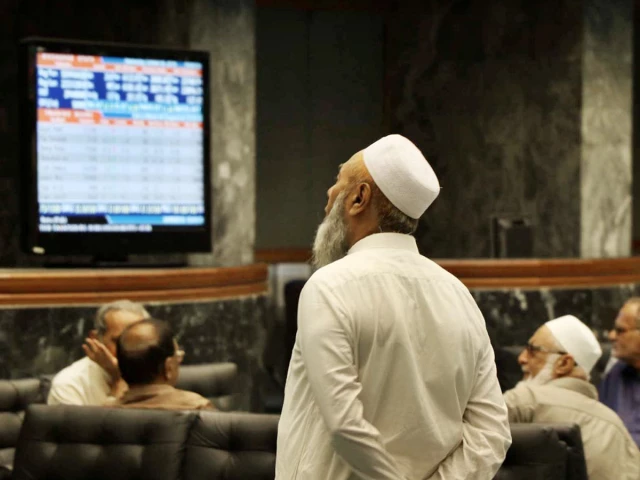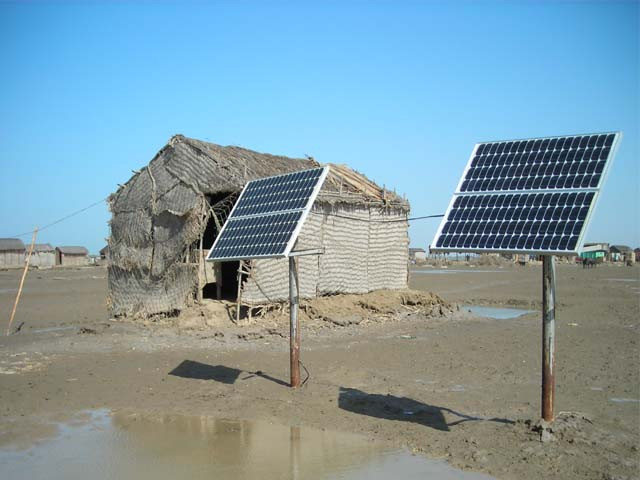Business
IMF talks stall over flood loss dispute | The Express Tribune

ISLAMABAD:
Pakistan and the International Monetary Fund (IMF) were unable to conclude the second review talks within the deadline due to “outstanding issues” concerning the timing of the publication of a Governance and Corruption Diagnostic Assessment report and differences over flood-loss estimates.
Officials said Pakistan estimated the total economic losses from last year’s floods at Rs744 billion, while the IMF’s assessment stood at around Rs585 billion, with fiscal losses even lower.
According to negotiators, other unresolved matters included the implications of these revised flood estimates for the primary budget surplus target, and the effect of the upward revision in last fiscal year’s GDP growth rate on projected revenues and expenditures.
On the same day the review was due to be finalised, the Planning Ministry convened a meeting of the National Accounts Committee, which approved a revised 3.04% growth rate for the last fiscal year. Officials said the revision would further reduce the tax-to-GDP ratio for that period, meaning the Federal Board of Revenue (FBR) would now require additional efforts to achieve this year’s 11% of GDP revenue target.
The IMF mission returned to Washington on Thursday without announcing a staff-level agreement — a prerequisite for presenting Pakistan’s case to the IMF Executive Board for approval of two loan tranches totaling $1.2 billion under separate programmes.
“The IMF team and the authorities will continue policy discussions with a view to settling any outstanding issues,” Iva Petrova, the IMF mission chief, said in a statement issued by the global lender.
The sources said that due to the absence of a fiscal assessment on the flood damage and Pakistan’s insistence on downward revising the targets, the staff level agreement could not be announced. They said that the IMF was ready to adjust the targets but linked it with the final assessment of these losses.
The planning ministry had presented Rs744 billion economic losses to the IMF.
The IMF indicated during the negotiations that it stood ready to review the targets during the next review of the programme and until then the Pakistani authorities should adhere to the agreed target for July-December period of this fiscal year, the sources added.
The IMF’s statement added that its team, led by Iva Petrova, visited Karachi and Islamabad from September 24 to October 8 to hold discussions on the second review under the Extended Fund Facility (EFF) and the first review under the Resilience and Sustainability Facility (RSF).
“The IMF mission and the Pakistani authorities made significant progress toward reaching a staff level agreement on the second review under the 37-month Extended Arrangement under the Extended Fund Facility and on the first review of 28-month Arrangement under the Resilience and Sustainability Facility, ” said the global lender.
“Programme implementation remains strong and broadly aligned with the authorities’ commitments”, it added.
However, the IMF did not use the word fully aligned, as the government could not uphold its words on not granting new tax concessions and implementing reforms in the state-owned enterprises.
Tax collection remained another weak area and both sides discussed downward revise the target. The IMF also asked to cut the public sector development programme by Rs300 billion to offset the impact of the economic losses and lower collection of taxes.
The IMF statement further underlined that significant progress was made in the discussions in several areas, including sustaining fiscal consolidation to strengthen the public finances while providing needed flood recovery support and ensuring inflation remains durably within the SBP’s target range by maintaining an appropriately tight and data-dependent monetary policy.
However, both Prime Minister Shehbaz Sharif and Finance Minister Muhammad Aurangzeb have been repeatedly asking the central bank to reduce interest rates, according to the statements made by both of them.
The IMF said that restoring the viability of the energy sector by implementing regular tariff adjustments and cost-reducing reforms was also important.
The sources said that one of the issues was the circular debt reduction target for the Power Division, which insisted that Rs505 billion more will be added in the flow of the debt as against the IMF’s desire to limit the losses to Rs200 billion.
The IMF said that progress was made on advancing structural reforms to reduce the footprint of the state, strengthen governance and transparency, foster a more competitive business environment, and liberalize commodity markets.
Productive discussions were also held on the authorities’ reform agenda to strengthen climate resilience, including the completion of reform measures under the RSF, said the global ender.
The IMF team also expressed its sympathy to those affected by the recent floods.
Governance report
The sources said that one of the outstanding issues was the publication of the Governance and the Corruption Diagnosis assessment report. The original deadline to publish the report was at the end of July while its implementation plan had to be published by the end of October.
Both sides were negotiating the mid of November new deadline to publish the report and mid of December to publish the implementation plan, the sources added. If there is a consensus on these dates, the staff level agreement will be announced soon, the sources added.
In its Governance and Corruption Diagnostic report, the IMF had recommended measures to enhance judicial integrity, address conflict of interest, and improve performance and service delivery. The global lender has also advised the federal cabinet, the Supreme Judicial Council and the provincial high courts, through their respective governments, to publish yearly reports.
The reports should list steps taken to strengthen judicial integrity, including statistics on complaints received, the disposition of complaints and actions taken.
To strengthen judicial integrity, the IMF advised Pakistan “strengthen integrity and conflict of interest provisions for all judicial personnel and review and increase transparency around payments and grants to judicial personnel”.
The report has also underlined that identification of politically exposed persons remained uneven and there were insufficient corruption-specific red-flags that could detect misuse of the public office in Pakistan.
The draft report further stated that reporting institutions to the regulators often lacked clarity on corruption-specific typologies and risk indicators. Sources said that the IMF was of the view that despite the specious transaction report guidelines and the red-flag indicators for various sectors and typologies, reporting institutions have limited access to typologies that reflect common methods of laundering corruption proceeds.
GDP growth
The government on Wednesday approved a 5.7% economic growth rate for the last quarter of the previous fiscal year on the back of a 20% increase in output of the industrial sector, which everyone believes is badly suffering because of tight economic conditions.
This has changed many assumptions of the IMF programme and the authorities now need more time to review the implications, the sources added.
NAC approved a 5.7% growth rate for April-June quarter, compared to only 2.8% growth in the preceding quarter, according to figures released by the Pakistan Bureau of Statistics (PBS) after the NAC meeting.
Business
OGRA Announces LPG Price Increase for December – SUCH TV

The Oil and Gas Regulatory Authority (OGRA) has approved a fresh increase in the price of liquefied petroleum gas (LPG), raising the cost for both domestic consumers and commercial users.
According to the notification issued, the LPG price has been increased by Rs7.39 per kilogram, setting the new rate at Rs209 per kg for December. As a result, the price of a domestic LPG cylinder has risen by Rs87.21, bringing the new price to Rs2,466.10.
In November, the price of LPG stood at Rs201 per kg, while the domestic cylinder was priced at Rs2,378.89.
The latest price hike is expected to put additional pressure on households already grappling with rising living costs nationwide.
Business
Private sector data: Over 2 lakh private companies closed in 5 years; govt flags monitoring for suspicious cases – The Times of India

NEW DELHI: The government on Monday said that over the past five years, more than two lakh private companies have been closed in India.According to data provided by Minister of State for Corporate Affairs Harsh Malhotra in a written reply to the Lok Sabha, a total of 2,04,268 private companies were shut down between 2020-21 and 2024-25 due to amalgamation, conversion, dissolution or being struck off from official records under the Companies Act, 2013.Regarding the rehabilitation of employees from these closed companies, the minister said there is currently no proposal before the government, as reported by PTI. In the same period, 1,85,350 companies were officially removed from government records, including 8,648 entities struck off till July 16 this fiscal year. Companies can be removed from records if they are inactive for long periods or voluntarily after fulfilling regulatory requirements.On queries about shell companies and their potential use in money laundering, Malhotra highlighted that the term “shell company” is not defined under the Companies Act, 2013. However, he added that whenever suspicious instances are reported, they are shared with other government agencies such as the Enforcement Directorate and the Income Tax Department for monitoring.A major push to remove inactive companies took place in 2022-23, when 82,125 companies were struck off during a strike-off drive by the corporate affairs ministry.The minister also highlighted the government’s broader policy to simplify and rationalize the tax system. “It is the stated policy of the government to gradually phase out exemptions and deductions while rationalising tax rates to create a simple, transparent, and equitable tax regime,” he said. He added that several reforms have been undertaken to promote investment and ease of doing business, including substantial reductions in corporate tax rates for existing and new domestic companies.
Business
Pakistan’s Textile Exports Reach Historic High in FY2025-26 – SUCH TV

Pakistan’s textile exports surged to $6.4 billion during the first four months of the 2025-26 fiscal year, marking the highest trade volume for the sector in this period.
According to the Pakistan Bureau of Statistics (PBS), value-added textile sectors were key contributors to the growth.
Knitwear exports reached $1.9 billion, while ready-made garments contributed $1.4 billion.
Significant increases were observed across several commodities: cotton yarn exports rose 7.74% to $238.9 million, and raw cotton exports jumped 100%, reaching $2.6 million from zero exports the previous year.
Other notable gains included tents, canvas, and tarpaulins, up 32.34% to $53.48 million, while ready-made garments increased 5.11% to $1.43 billion.
Exports of made-up textile articles, excluding towels and bedwear, rose 4.17%, totaling $274.75 million.
The report also mentioned that the growth in textile exports is a result of improved global demand and stability in the value of the Pakistani rupee.
-

 Sports1 week ago
Sports1 week agoWATCH: Ronaldo scores spectacular bicycle kick
-

 Entertainment1 week ago
Entertainment1 week agoWelcome to Derry’ episode 5 delivers shocking twist
-

 Politics1 week ago
Politics1 week agoWashington and Kyiv Stress Any Peace Deal Must Fully Respect Ukraine’s Sovereignty
-

 Business1 week ago
Business1 week agoKey economic data and trends that will shape Rachel Reeves’ Budget
-

 Politics1 week ago
Politics1 week ago53,000 Sikhs vote in Ottawa Khalistan Referendum amid Carney-Modi trade talks scrutiny
-

 Tech6 days ago
Tech6 days agoWake Up—the Best Black Friday Mattress Sales Are Here
-

 Fashion1 week ago
Fashion1 week agoCanada’s Lululemon unveils team Canada kit for Milano Cortina 2026
-

 Tech1 day ago
Tech1 day agoGet Your Steps In From Your Home Office With This Walking Pad—On Sale This Week



1729471601-0/image-(8)1729471601-0-640x480.webp)






